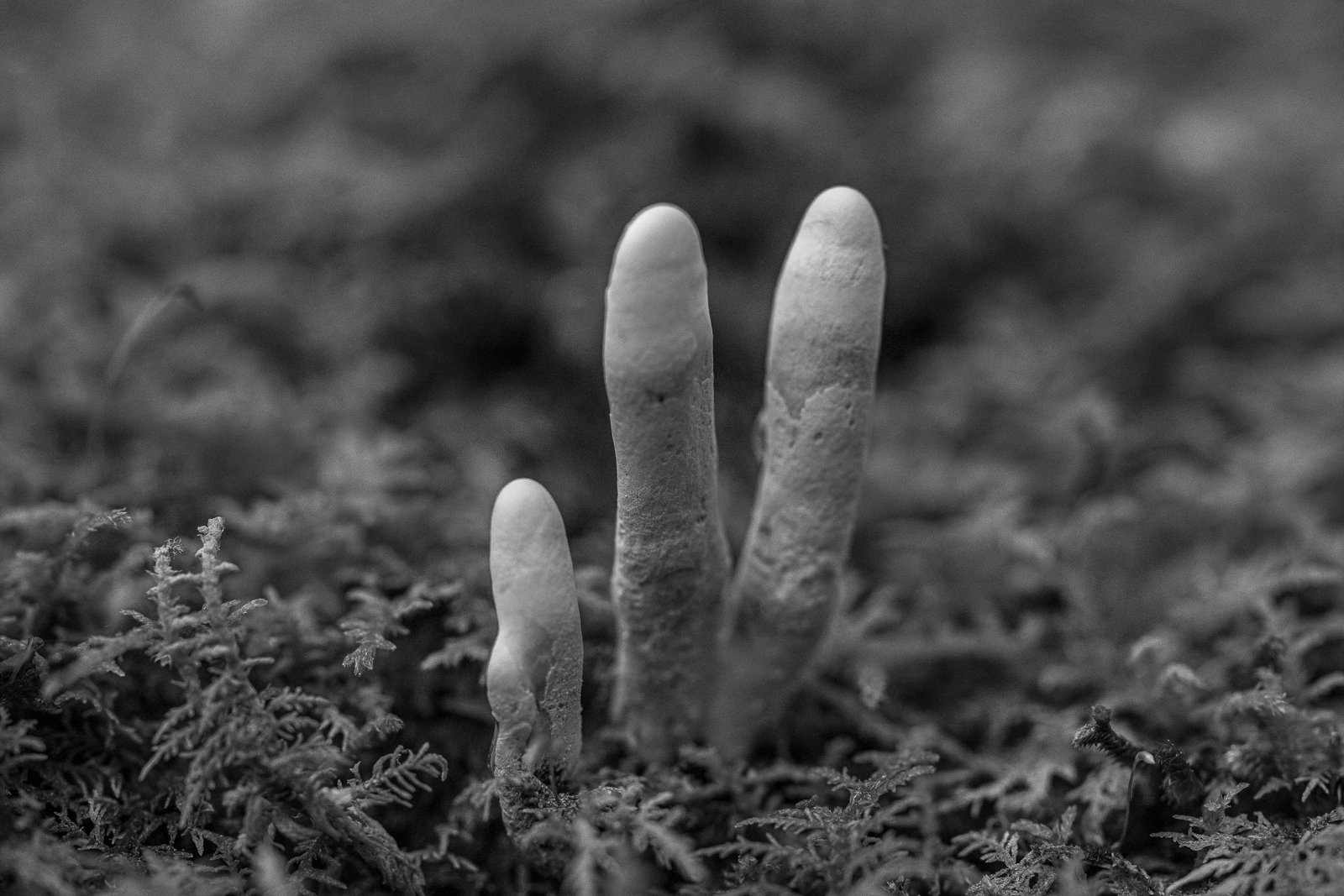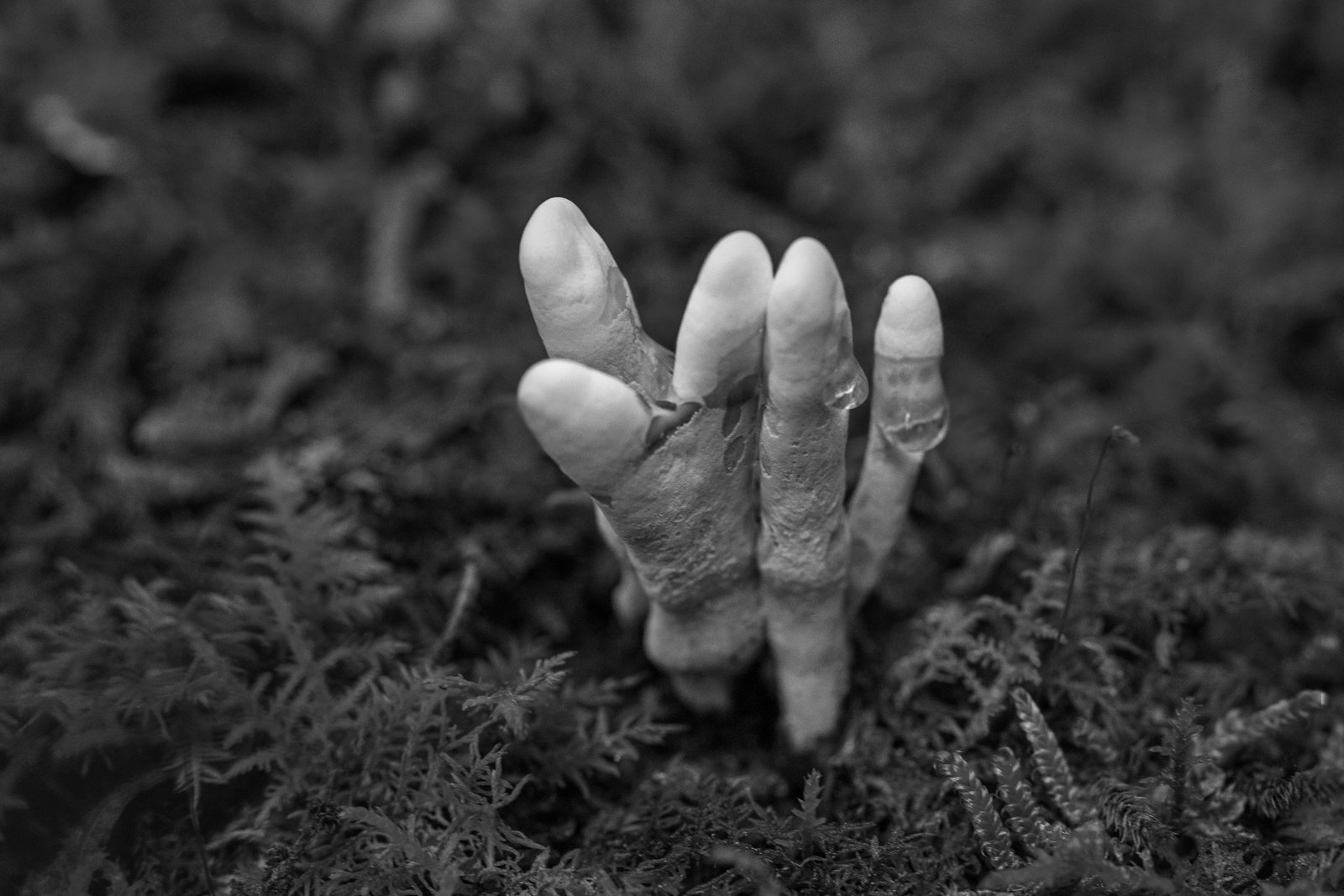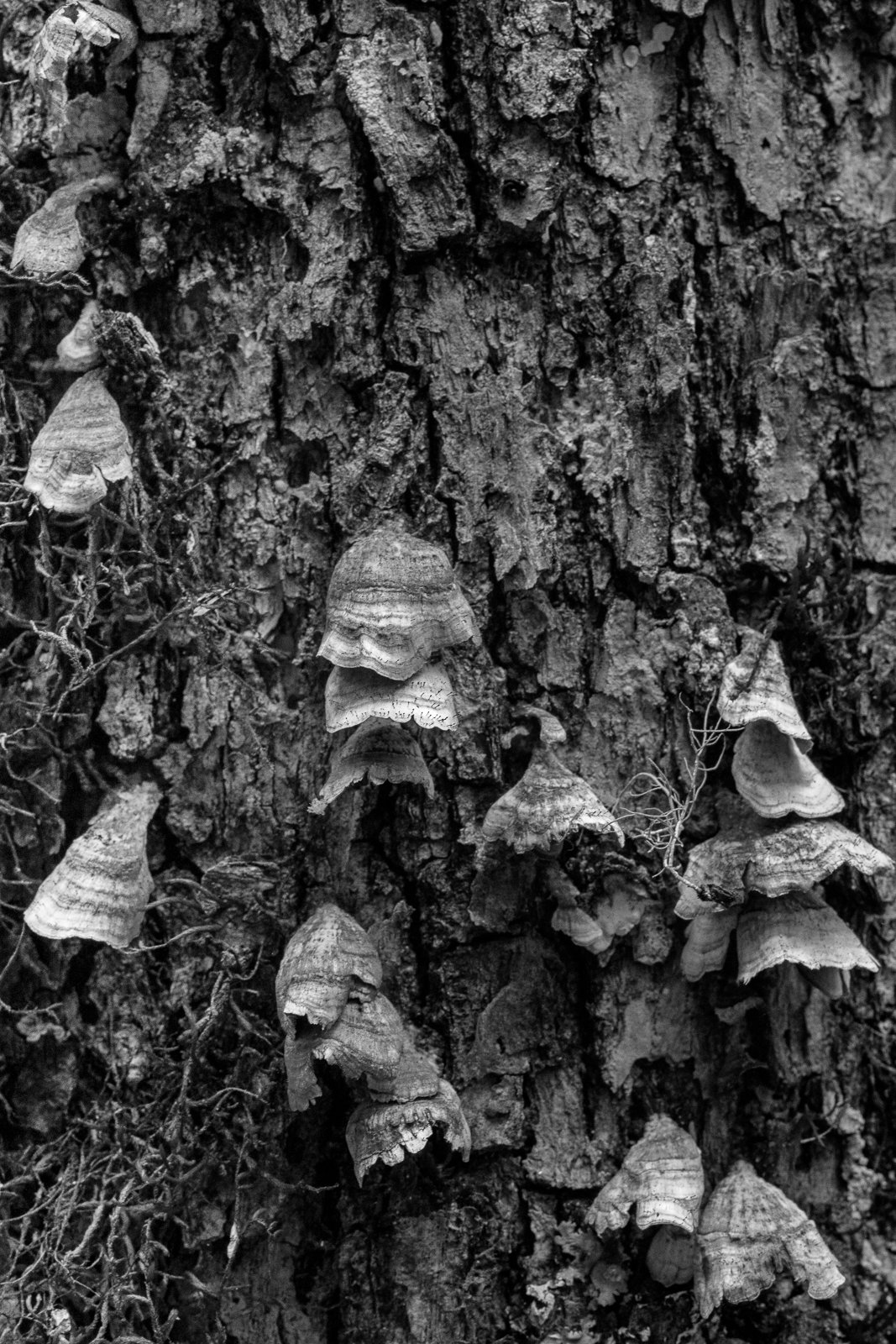The Role of Fungi in Combatting Air Pollution and Detoxifying Soil
The two images above are Dead Man’s Finger fungi (Xylaria polymorpha) that I spotted on the Bartram Trail from Jones Gap to White Rock Mountain last Wednesday, the first day of our air quality alert. They really do resemble fingers coming up out of the ground and are quite spooky-looking. These saprotrophic fungi serve a valuable role in decomposing the wood of the dead trees they feed on, breaking it down into organic matter that other lifeforms in the forest can feed on. But the benefits of fungi in the forest aren’t just limited to decomposition, they also ingest hydrocarbons and break down 80 percent of the carbon they take in and turn it into food, so they are beneficial for air quality. And as you can see in the image on the right, they take in a lot of water too as well as creating water as a byproduct of their energy creation. It hadn’t rained for a couple of days, but still there were drops of water clinging to these mushrooms. Fungi are 90 percent water and need water for the enzymes they secrete that break down wood and other decaying organic matter. As you can see, fungi are also helpful in absorbing water when there is too much rain, as are trees.
This past week we have seen the air quality deteriorate across the eastern United States, due to the forest fires burning in Ontario, Quebec, and Nova Scotia. There are also wildfires in British Columbia, Alberta, and Saskatchewan affecting other parts of the country. We first had an ozone air quality alert from the fires last Wednesday. Although ozone levels have gone down enough to cease triggering air quality alerts, there are still high levels of particulate matter in the air that are harmful to breathe. Forest fires produce polycyclic aromatic hydrocarbons and carbon oxides. The toxicity of the chemicals they release is persistent and bioaccumulates over time. PAH’s are particularly destructive for our skin, since they prevent the skin’s detoxifying abilities from functioning properly. Too much exposure can cause cancer, cataracts, kidney and liver disease, and other health conditions. I am grateful for the presence of fungi in the forest, since they are able to oxidize hydrocarbons to form water and less toxic residues. (Here is a fantastic article on how bacteria, fungi, and algae contribute to the degradation of PAH’s for Frontiers in Microbiology: https://www.frontiersin.org/articles/10.3389/fmicb.2016.01369/full)
Puffball Mushrooms on the Bartram Trail
Puffball mushrooms are important because they accumulate heavy metals in the soil and function as indicators of soil pollution, as well as helping to improve soil quality. Many companies encourage farmers to use biofertilizers containing fungi, but unfortunately these products aren’t regulated and this practice could also have unintended consequences, as does everything we try to do to “improve” or control nature. I first read about this practice five years ago or so, when I developed an interest in farming since it has such a big impact on water quality. I thought at first that it would beneficial, since it seemed more natural than other fertilizers that use artificial, water soluble chemicals and that increase nitrogen levels too much and release greenhouse gasses. However, I have learned that adding mycorrhizae to soil may have negative impacts besides just providing nutrients. Miranda Hart wrote an article for Modern Farmer in March, in which she posed the question “Does adding fungi to soil do more harm than good?” As is the case for plants, trees, and other species we introduce to a region, biofertilizers with non-native fungi could potentially outcompete local fungi. Hart says, this could alter the composition and productivity of local plant communities, which is problem for agriculture, forestry, and natural systems. (Here is the link to her article: https://modernfarmer.com/2022/03/mycorrhizal-fungi-bio-fertilizer-good-or-bad/) Nevertheless, native fungi are integral to the health of the planet, and since they grow on and around trees preserving our woodlands is a worthy goal.
Fungi don’t just grow in the soil at the base of trees, many live on the trees along with mosses, lichen, and algae, particularly in the bark of older trees. This is an important reason why we need to preserve our older growth trees and trees in general. The shelf fungi or polypores in the images above are important recyclers of nutrients, since they can decompose plant tissues in the cell walls of woody plants and trees (https://stlawrencelowlands.wordpress.com/2018/11/14/shelf-fungis-growth-preference-between-standing-dead-and-fallen-dead-trees/). A study conducted at the St. Lawrence Lowlands found that they prefer fallen to standing dead trees, so leaving fallen trees is critical for the health of our forests. The more polypores that are present, the healthier and more fertile a forest is considered to be.
Inside the Hollow of a Dying Tree
My husband and I came upon this tree with a big hollow and a crack on the other side. It was very tall and there were still green branches at the top, above the rest of the tree canopy, but the tree was clearly in decline. Dave has been making sound recordings for the Bartram Trail project I am working on and this particular tree was making very deep noises that sounded like it was breathing. The crack on the other side was opening and closing while it was making all the noise. I expect the tree was on the verge of cracking completely and falling to the ground, and that it was emitting distress signals and not just breathing . It was amazing to hear it’s last gasps like that. A decade ago the National Center for Biotechnology Information put out a call for studies on acoustic communication in plants (https://www.ncbi.nlm.nih.gov/pmc/articles/PMC3677178/). This year researchers at Tel Aviv University discovered that the alarm signals emitted by plants and trees under stress do in fact get converted into sounds was that can be hard by bats, mice and insects, even if they are imperceptible to the human ear (https://www.sciencedaily.com/releases/2023/03/230330133551.htm). Susan Simard and David George Haskell are others working on how trees communicate and their books Finding the Mother Tree (Simard) and The Songs of Trees: Stories from Nature’s Great Connectors (Haskell) are fascinating reads. I do believe that fungi are one of our best allies in combatting climate change due to their ability to sequester carbon and toxic chemicals and turn them into less toxic residues and food for the forest. However, I can’t help but wonder if as our fires increase, as they have appeared to be doing in recent years, if there will come a point where the fungi are incapable of filtering so many toxins. Additionally, the more trees we lose, the less of these important lifeforms there will be to help regulate our forests and our air wherever we live. This past week has shown us all just have far air currents can carry smoke and other pollutants.






